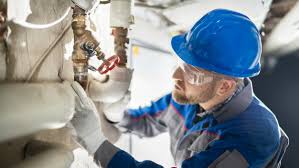It is challenging when your construction site poses a high risk for the staff. When the site has a high concentration of asbestos, it is not a good idea to continue the construction work without removing every ounce of this element from the site. Throughout Australia, including Sydney, asbestos was the primary material used in construction for flooring, roofing, and pipelines. But after 1990, the problems related to asbestos were understood, and subsequently, it was banned by the government in 2003.
If you plan to renovate a vintage house or build a new one, there is a possibility of finding the presence of asbestos. If that happens, the first thing you must do is contact an agency that specialises in asbestos removal in Sydney.
What is the actual risk of asbestos?
Asbestos is not that dangerous when it is in a solid form or inside any material/underground. It becomes dangerous when its fibres are released into the atmosphere.
It can crumble into fibres (friable) and get into your body through air or water. Most of the time, it gets into your body through the respiratory system and causes asbestosis, cancer, and mesothelioma.
Friable asbestos was widely used in industries across the country. In Australia, loose-fill asbestos has also been commonly found in the New South Wales region’s residential properties. Asbestos is usually found in many cities in the country, especially in metropolitan cities like Sydney, where huge construction works have been happening since the 90s.
Who will face the health issues?
The most affected are those in the construction or demolition crew and employees related to these projects. Building inspectors, excavators, staff handling flooring jobs, tile setters, painters, contractors, sawyers, and building managers are the real victims of this element.
More than 80% of mesothelioma cases in Australia are caused by exposure to asbestos fibres. And more than 25% of the patients were construction workers.
It’s not just the people involved in core construction works who are more prone to asbestos-related issues. People who are in these professions also face the risk of mesothelioma:
- Electricians
- Carpenters
- Engineers
- Plumbers
- Blacksmiths
How can you minimise the risk?
As the head of a construction firm, or manager of the project, you can do a lot to minimise the risk of asbestos exposure by following the below-given steps:
- As a manager/head of a project, you must prepare an asbestos management plan following Safe Work Australia guidelines. Among other tasks, you have to identify the regions where asbestos is present and include control measures and procedures for emergencies.
- You have to inform the staff about the health risks and teach them how to identify the asbestos on the site. You have to monitor their health throughout the project.
- You must provide protective equipment when you are working with asbestos.
- If the presence of asbestos is proved, you need to call an agency that has experience in asbestos removal in Sydney. Try to contact a service agency near your city for immediate service and reachability.
- As per Safe Work Australia rules, you need to inform a licensed professional to remove more than 10 square meters of non-friable asbestos.
If you follow these tips, your employees and the residents will be safe from any diseases in future. People affected by asbestos are still suffering, and it’s your responsibility to prevent similar scenarios in the future. Stay focused at the site and consult professionals who can detect the asbestos if doubtful.

